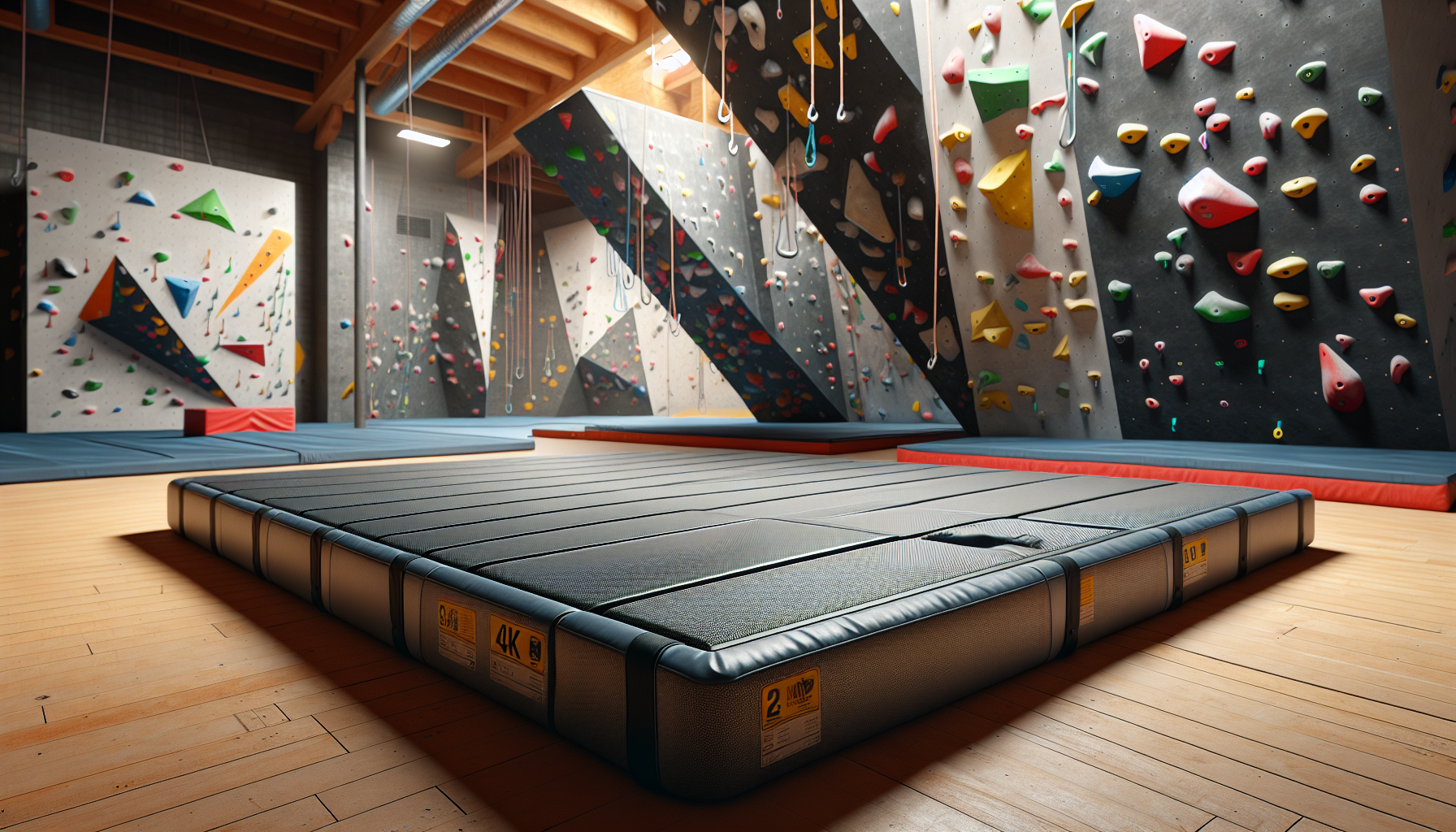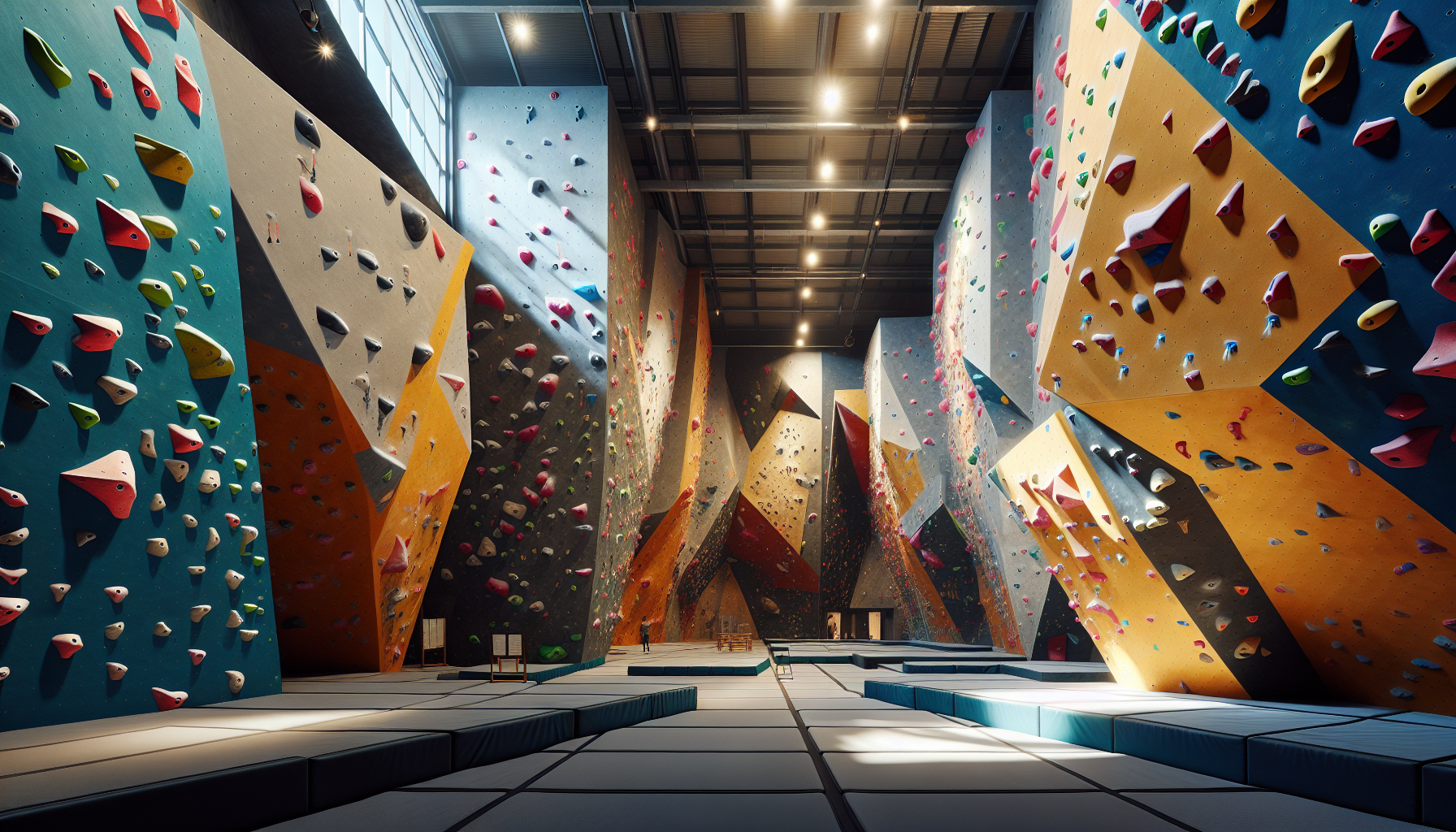
Engaging in a challenging sport can lead to incredible personal growth and transformation. The dynamic nature of the activity pushes individuals to their limits, both physically and mentally.
As enthusiasts tackle various boulders, they are confronted with obstacles that demand strength and determination.
Overcoming fears often becomes a significant part of their journey, where resilience is built one challenge at a time.
Within the supportive ambiance of climbing gyms, participants develop a sense of camaraderie that enhances their experiences. Each session fosters teamwork and encourages climbers to celebrate their achievements, paving the way for triumphs that resonate beyond the walls of the gym.
Along this path, essential life lessons emerge, shaping not only their climbing skills but also their character.
Personal Growth Through Bouldering
Embarking on a challenging journey allows individuals to discover their inner strengths and capabilities. Each route presents not just physical obstacles, but a chance to confront fear and self-doubt.
Participants often find that these moments on the vertical wall serve as metaphors for deeper personal struggles.
By setting specific goals beyond mere physical fitness, climbers can enhance their motivation and engage in meaningful self-discovery.
Regular sessions improve not only strength but also mental toughness, essential for navigating life’s complexities. Utilizing mindfulness techniques while tackling daunting challenges promotes improved focus and creates harmony between body and mind.
Joining a community of passionate individuals unlocks shared experiences, fostering knowledge about various aspects of climbing equipment and techniques. Collectively, these explorers cultivate an environment rich in support and encouragement.

Mastering Indoor Climbing Techniques
Excelling in a climbing gym demands not just physical strength but also an array of specialized techniques. By acquiring advanced skills, climbers can experience a notable improvement in their performance and overall enjoyment while tackling various routes.
Among these techniques, proficient footwork plays a vital role; precise placements help conserve energy during climbs.
Adopting silent and deliberate footwork enhances movement efficacy, reducing both noise and distractions.
Equally essential to success in a bouldering area is strategic body positioning.
Grasping the nuances of weight distribution directly impacts a climber’s grip strength and control. Engaging the core is crucial for stabilizing movements, thus ensuring better balance, particularly when facing challenging bouldering problems.
Knowing when to employ dynamic or static techniques can make all the difference when confronting a tougher grade.
Route reading serves as a foundational skill for every climber aiming for progression. By breaking down climbing projects into manageable sections, athletes can streamline their approach.
Visualizing sequences of movement helps indoor climbers anticipate key holds and appropriate resting spots.
Regularly practicing these strategies in a climbing gym can result in significant improvements over time.
| Technique | Importance |
|---|---|
| Proficient Footwork | Helps conserve energy during climbs |
| Strategic Body Positioning | Directly impacts grip strength and control |
| Weight Distribution | Crucial for stabilizing movements and balance |
| Route Reading | Helps visualize and anticipate key holds and rests |
Essential Gear For Every Climber
Embarking on a climbing adventure requires careful consideration of vital equipment that enhances both safety and performance. Proper footwear, specifically climbing shoes, plays a crucial role in achieving optimal grip and support.
When comparing features, consider factors such as fit and rubber density; beginners should prioritize comfort, while those with experience may seek specialized profiles tailored for various climbing techniques.
Must-have safety gear cannot be overlooked, particularly for those venturing into outdoor bouldering.
Essentials like crash pads are vital for protecting against falls, while helmets are necessary for head injury prevention.
Regular gear inspection ensures reliability and safety during climbs, whether you’re tackling a challenging boulder problem or engaging in lead climbing.
Managing sweat effectively is essential in any climbing scenario, making chalk a key component of your gear. With a range of versatile options available, finding the right product can dramatically improve your grip.
By investing in the correct gear, you elevate your entire climbing experience.
Training Your Body For Bouldering
Achieving peak performance on a section of wall requires a thoughtful training strategy tailored to the demands of the sport. A balanced routine focusing on strength and flexibility is essential, as these attributes are crucial for scaling harder grades with efficiency.
By targeting specific muscle groups, such as the back, core, and shoulders, you can develop the power necessary for each climbing session.
Integrating effective exercises like pull-ups and planks into your regimen significantly boosts your capability on climbing holds.
Flexibility is equally important, enabling you to reach for holds without compromising your balance.
Incorporating dynamic stretching before workouts and static stretching afterward helps prevent injuries and enhances mobility.
Proper warm-up routines and recovery techniques, like foam rolling, are vital for maintaining your body’s performance, especially as you tackle local projects or highball routes. A well-structured program not only prepares you for challenging climbs but also ensures that each session is as safe and effective as possible.
Climbing Performance
- A balanced training routine improves both strength and flexibility, which are essential for climbing.
- Targeting specific muscle groups like the back, core, and shoulders enhances power needed for climbing.
- Dynamic stretching before workouts and static stretching afterward helps prevent injuries and boosts mobility.
- Effective warm-up and recovery techniques, such as foam rolling, are crucial for maintaining peak performance during climbs.
Overcoming Difficult Boulder Problems
Confronting challenging climbing obstacles can reveal the mental and physical demands of this sport. As climbers navigate various rock types, they often encounter fear and frustration that can hinder their performance, especially on formidable routes like overhangs or dynamic climbing situations.
Recognizing personal triggers plays a crucial role in managing these emotions effectively.
Employing mindfulness techniques enables climbers to maintain focus and quiet their minds while ascending.
Cognitive reframing aids in shifting negative thoughts about difficult bouldering problems into a more positive outlook, which is vital as they tackle each unique challenge.
Dissecting moves into fewer components allows for incremental progress, letting climbers set achievable goals as they advance through the v-scale.
Visualization practices can bolster performance by facilitating mental rehearsals of each move, enhancing confidence before taking on tough outdoor climbing challenges.
The Joy Of Climbing With Friends
Forging connections through shared adventures makes the experience of reaching new heights truly memorable. Groups of friends can explore various bouldering routes together, creating moments that strengthen not only their climbing skills but also their friendships.
Facing challenges collectively, such as difficult sequences of moves, emphasizes the importance of teamwork and effective communication.
Each ascent fosters trust among participants, establishing a strong partnership built on mutual support and encouragement.
Engaging in activities like setting shared goals or discovering new forms of climbing ignites excitement in the journey. This sense of camaraderie is essential; it motivates individuals to overcome fears and potential sprains, ultimately leading to both personal growth and triumph as a unit.
| Aspect of Climbing | Impact on Relationships |
|---|---|
| Shared Adventures | Strengthens friendships |
| Facing Challenges Together | Enhances teamwork and communication |
| Trust Building | Fosters mutual support and encouragement |
| Setting Shared Goals | Increases motivation and excitement |
Safety Tips For Indoor Rock Climbing
Engaging in the activity of climbing indoors offers exhilarating experiences, yet it necessitates a keen focus on safety. Common hazards, such as the use of ropes or harnesses, pose risks, especially when climbers lack proper falling techniques.
It is crucial for beginners to recognize personal limits to prevent injuries stemming from overestimating climbing skills.
Ensuring ample space while navigating walls without can mitigate the chance of accidents resulting from overcrowded environments.
Practicing lesser-known techniques can significantly enhance safety.
Spotters, for instance, must master specific methods to effectively assist climbers while avoiding common pitfalls. Utilizing clear verbal cues is vital for maintaining communication in busy climbing gyms, and assessing the route’s difficulty helps climbers select challenges appropriate to their skill level.
In cases of emergency, understanding the location of exits and adhering to established protocols is imperative.
Promptly reporting injuries and being familiar with basic first aid can greatly influence the outcome of an accident.
Finding Your Ideal Climbing Gym
Choosing the right facility for climbing can significantly impact your progress and enjoyment. It’s vital to evaluate the total number of climbing walls and the variety of difficult problems available, ensuring that the routes appropriately challenge your current skills.
Experienced boulderers often search for gyms that provide hard grades and a diverse range of hold types, catering to their expertise and aspirations.
Equally important is the sense of community; participating in social events can foster connections among climbers, creating a supportive environment that encourages personal growth and learning.
A gym that offers yoga and fitness classes can contribute to developing total body strength, an essential aspect of enhancing climbing performance. Overall, a well-rounded gym experience is crucial for advancing in this thrilling sport
| Criteria for Climbing Facilities | Importance |
|---|---|
| Number of Climbing Walls | Enhances variety and challenges for climbers |
| Diversity of Routes | Caters to different skill levels and personal growth |
| Community Events | Fosters connections and a supportive environment |
| Yoga and Fitness Classes | Contributes to overall body strength for climbing performance |





